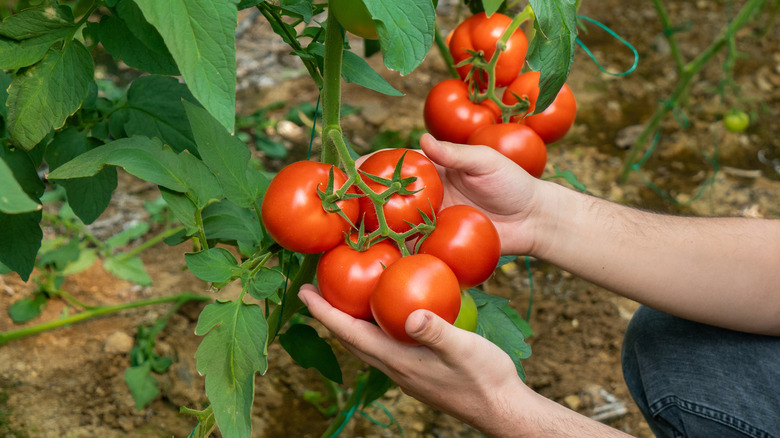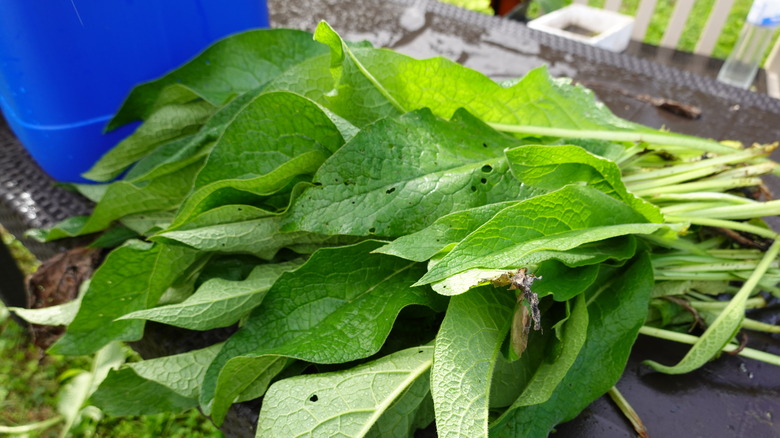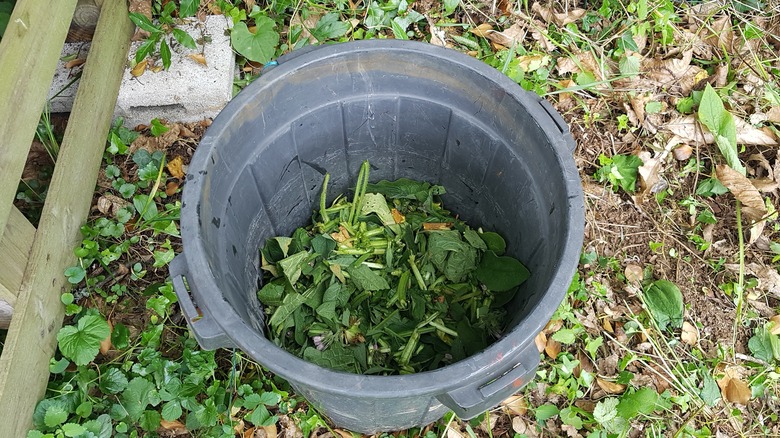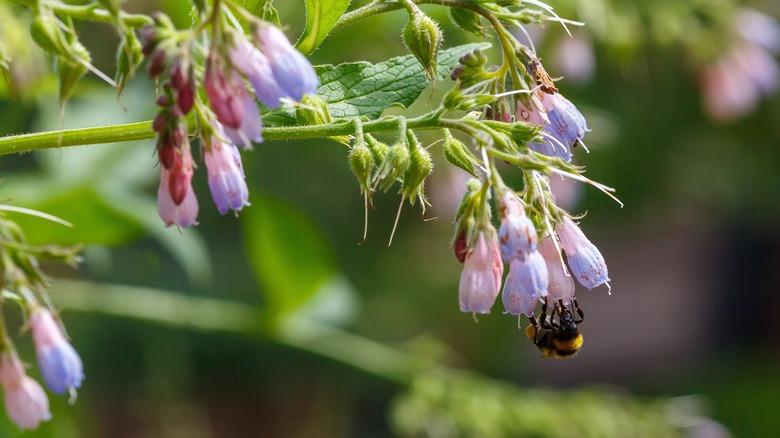The One Weed You Should Harvest For A DIY Tomato Fertilizer
Gardeners sometimes use the term "weed" pretty loosely, as very often what one person considers an unwanted plant is valuable to someone else. What we should all agree on is that tackling invasive weeds on your property is important, and common comfrey (Symphytum officinale L.) is either a helpful source of nutrients or an invasive plant, depending on where you live. In my region, comfrey does not grow out of control, and there are several ways I like to use it. Among those is as a fertilizer for tomatoes and other plants.
While I love comfrey — and it's pretty difficult to find and expensive where I live — this plant is on the invasive species list in Oregon. It also may be considered a noxious weed elsewhere on the East Coast, so it's always good to check with your local extension service to see if you can responsibly grow this weed to use as fertilizer for your tomatoes. Furthermore, common comfrey contains toxic chemicals, so be sure to keep your family safe. Finally, if you are foraging for comfrey leaves in a region where it grows wild, be sure to get approval from property owners if you'd like to remove leaves or plants. Also, check your local laws for the legality of removing plants from city, state, or federally controlled areas.
Why and how to harvest comfrey for a tomato fertilizer
There are a few ways to turn comfrey leaves into fertilizer, but before I dive into that, let me tell you why this particular weed is so useful in the garden. Comfrey has a unique ability to draw up nutrients from deep within the ground because of its exceptionally deep roots. That means this plant can reach important food sources that aren't available to most plants. Those nutrients are stored up in comfrey's full, fuzzy leaves. When they decompose, they are released back onto the surface of the soil. In short, comfrey makes macro and micronutrients stored far underground into bioavailable food for any plant on which they are used, therefore improving their growth and fruit production.
If you're harvesting leaves for tomatoes or other plants, whether you are growing it yourself or foraging, you'll want to wear gloves and probably long sleeves. The leaves and stems are a little prickly and can irritate your skin. You can cut the leaves or harvest the whole plant, but keep in mind that comfrey can reach 3 feet tall, so if you're removing the plant, you'll need something large to store it in. I prefer to cut off the leaves and toss them in a 5-gallon bucket.
Using comfrey leaves as a fertilizer
Once you've collected your comfrey leaves, there are two ways to use them to fertilize your plants. The easiest option is to use this weed as mulch around the base of plants. It will slowly decompose, making those nutrients available to your plants as it breaks down. This process offers a few benefits, especially when used around tomatoes. Of course, the large leaves will act as a fertilizer, but they will also suppress weeds. Since you'll want to mulch around your tomato plants to help prevent the spread of blight caused by fungal spores stored in the soil, comfrey leaf mulch can do triple duty as a fertilizing, weed-suppressing, and disease-preventing mulch. For this method of fertilization, just add a few layers of leaves around the base of each plant.
The second option is comfrey tea, which is very beneficial as a quick-release foliar fertilizer, but it comes with a warning: comfrey tea is stinky. Really stinky. But, so is fish emulsion and it has amazing benefits, so sometimes we just need to hold our nose and carry on. To make your comfrey tea, chop up your leaves into smaller pieces so they'll break down more quickly. Add them to a 5-gallon bucket, fill the bucket with water, and put a lid on it. Wait about a month and your tea can be used to water plants or poured into a bottle to use as a foliar spray.
Living fertilizer around trees and perennials
Comfrey has benefits beyond tomatoes and other garden annuals. In regions in which this plant is not invasive, you can use it as living fertilizer around larger trees and perennials. I like this option for a few reasons. Bees love the nectar of the pretty little bell-shaped flowers comfrey offers, so when planted around plants that need pollination, comfrey can bring more beneficial insects to your awaiting flowers. Personally, I also like growing comfrey around my fruit trees to protect the trunk from getting weed-whacked.
My favorite aspect of growing comfrey around the trees in my mini-orchard is that they create a self-fertilizing environment. As they grow in the spring and summer, absorbing vital nutrients from deep in the soil, they store that valuable food in their leaves. When the first freeze hits, the plants die back, creating a layer of protective mulch that deposits all those nutrients back into the surface of the soil as they decompose. Then, the process starts all over the next spring. This plant isn't the right addition for every landscape, but whether you're foraging or growing it in your own space, comfrey is certainly a weed with a plethora of benefits for tomatoes and anything else in your garden that needs a boost.



